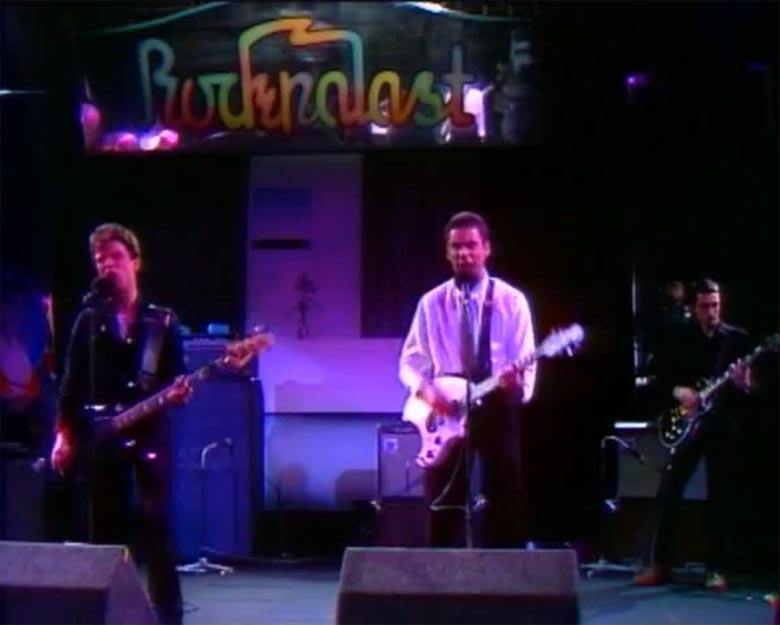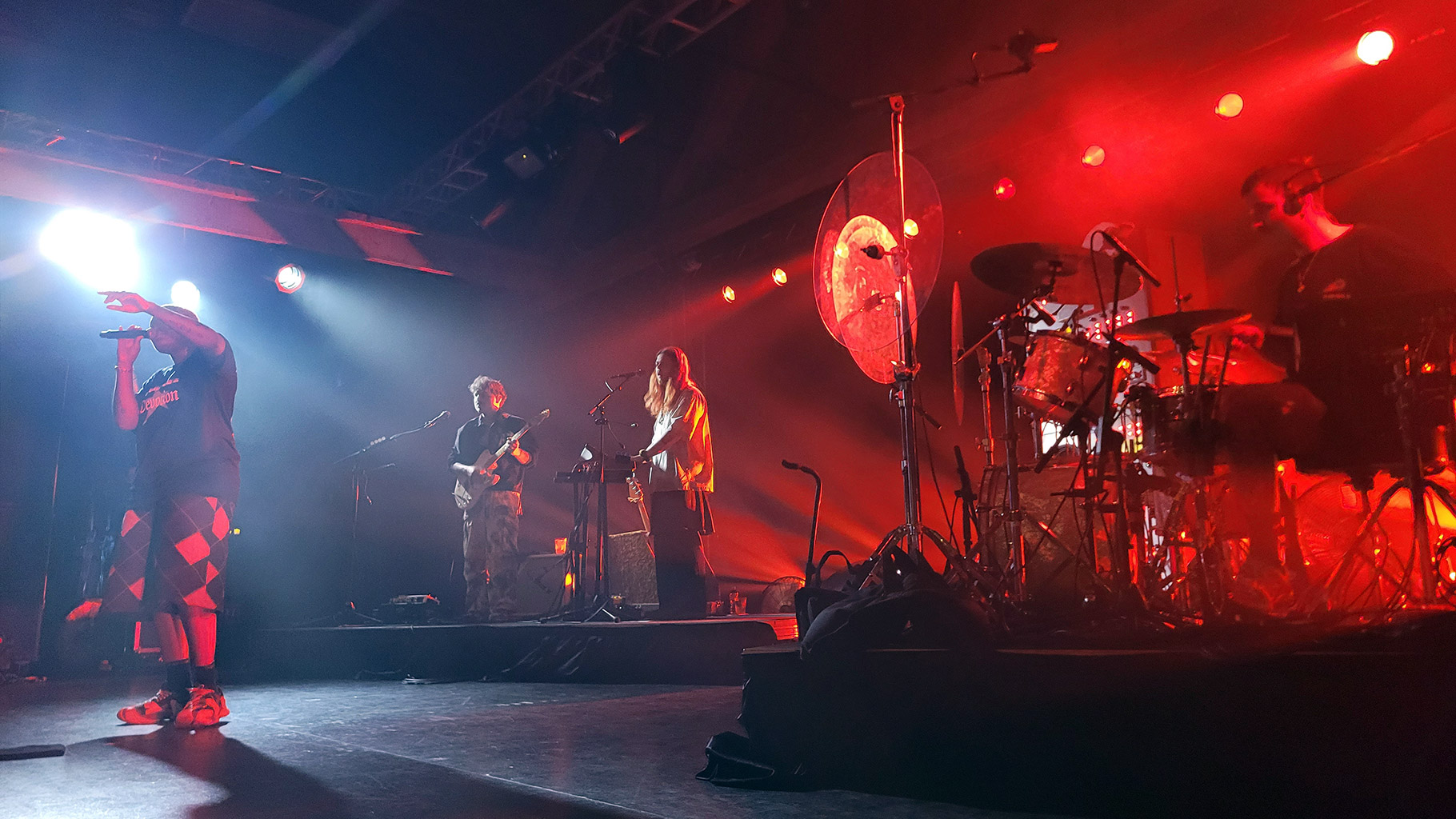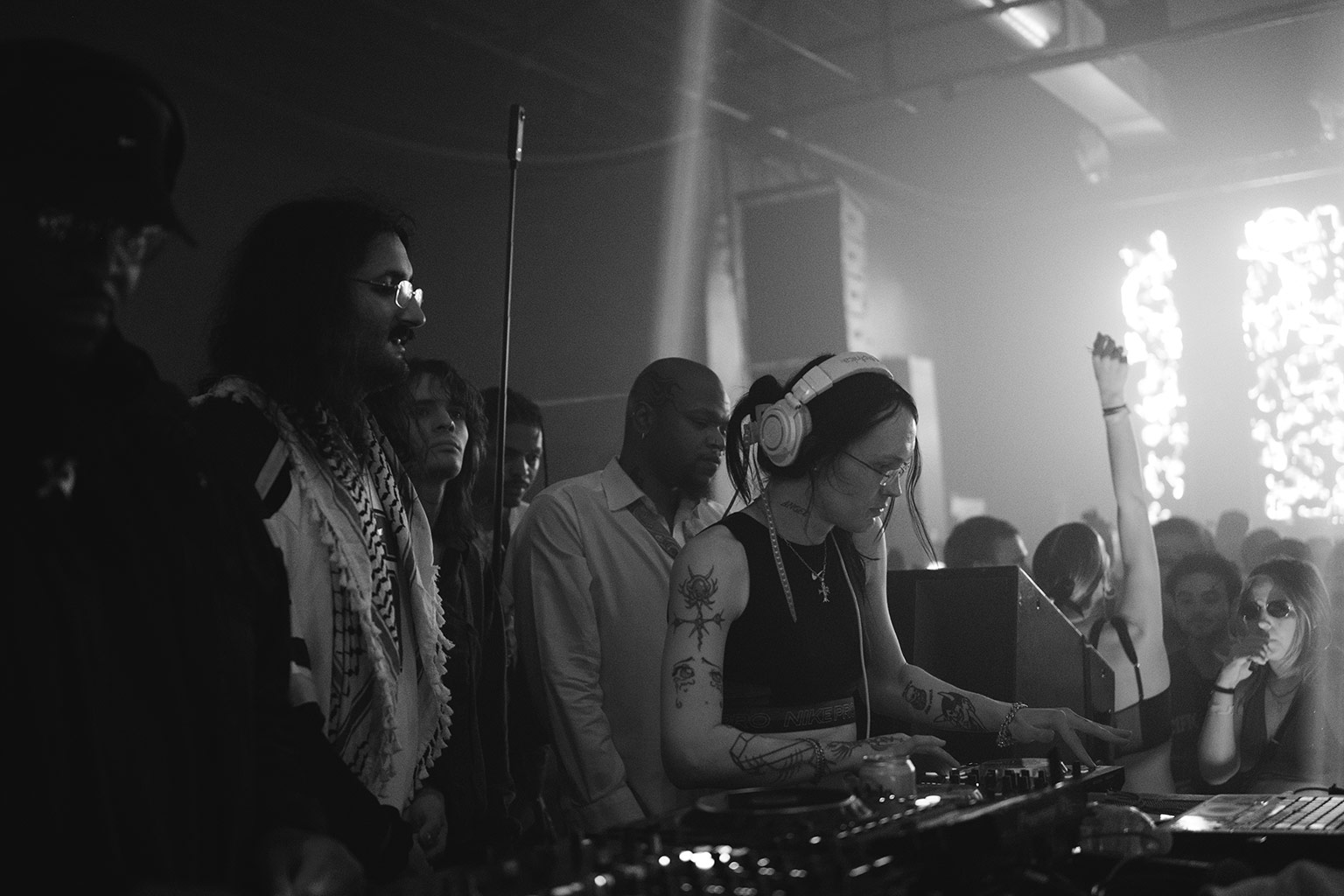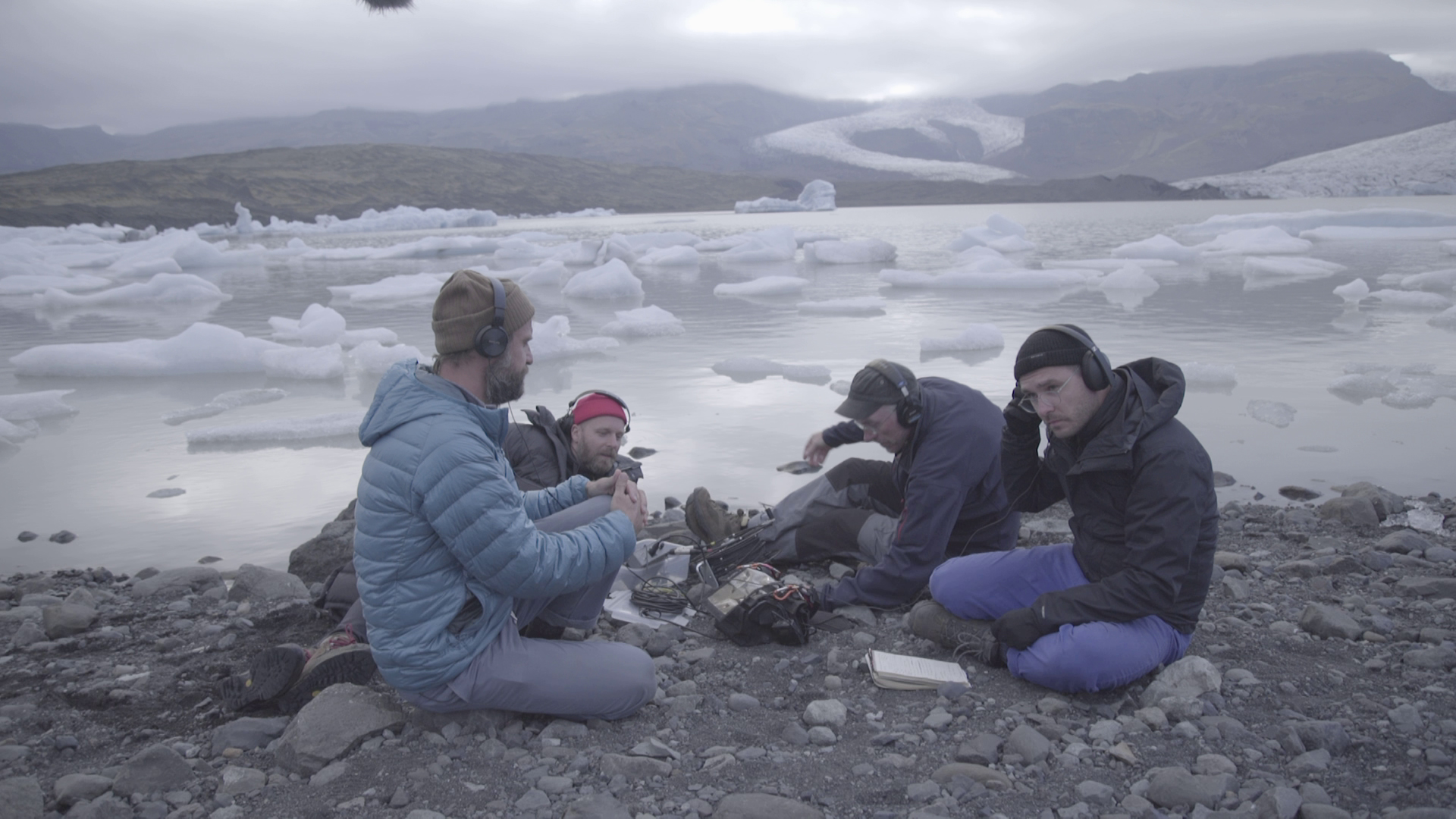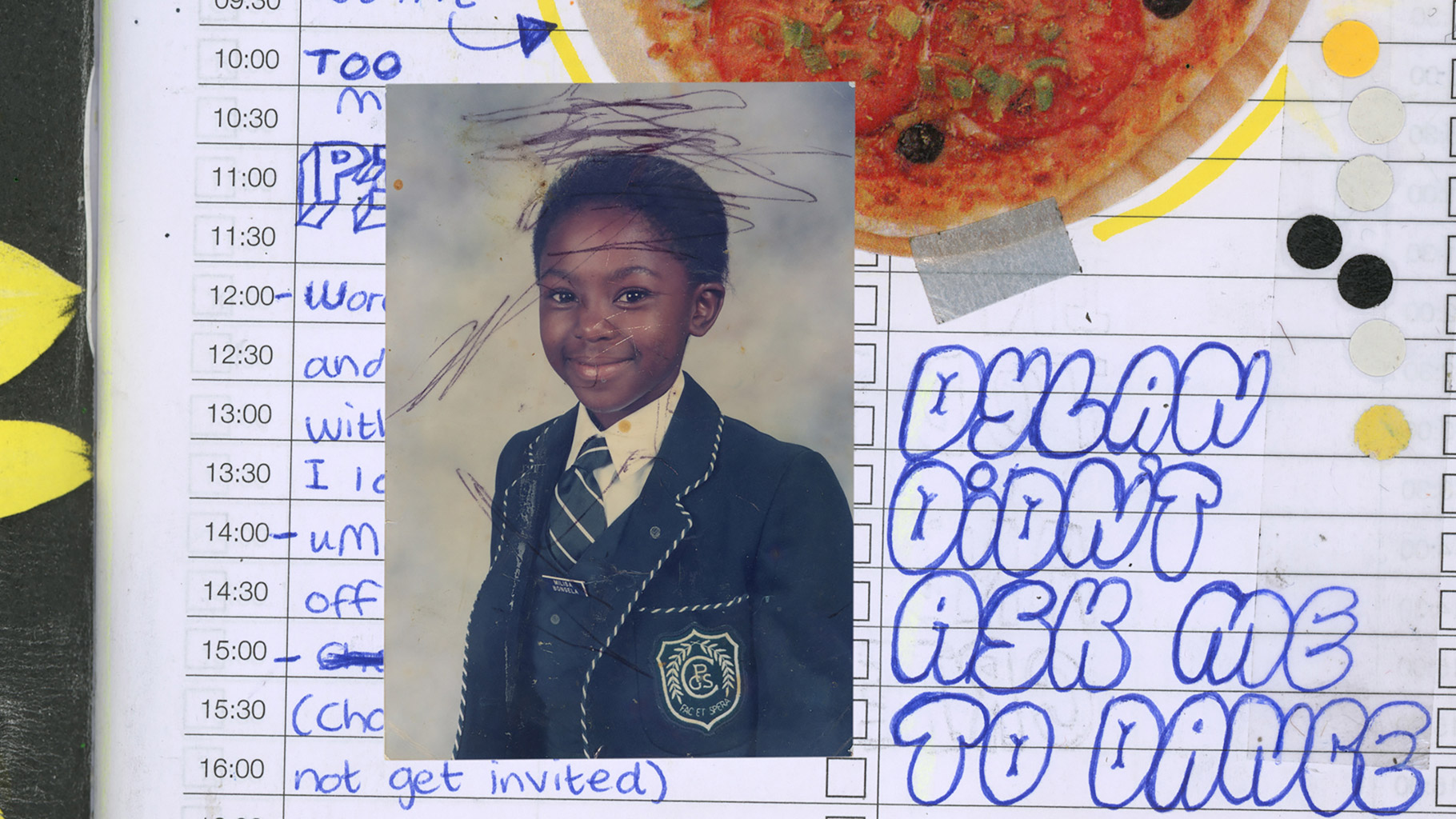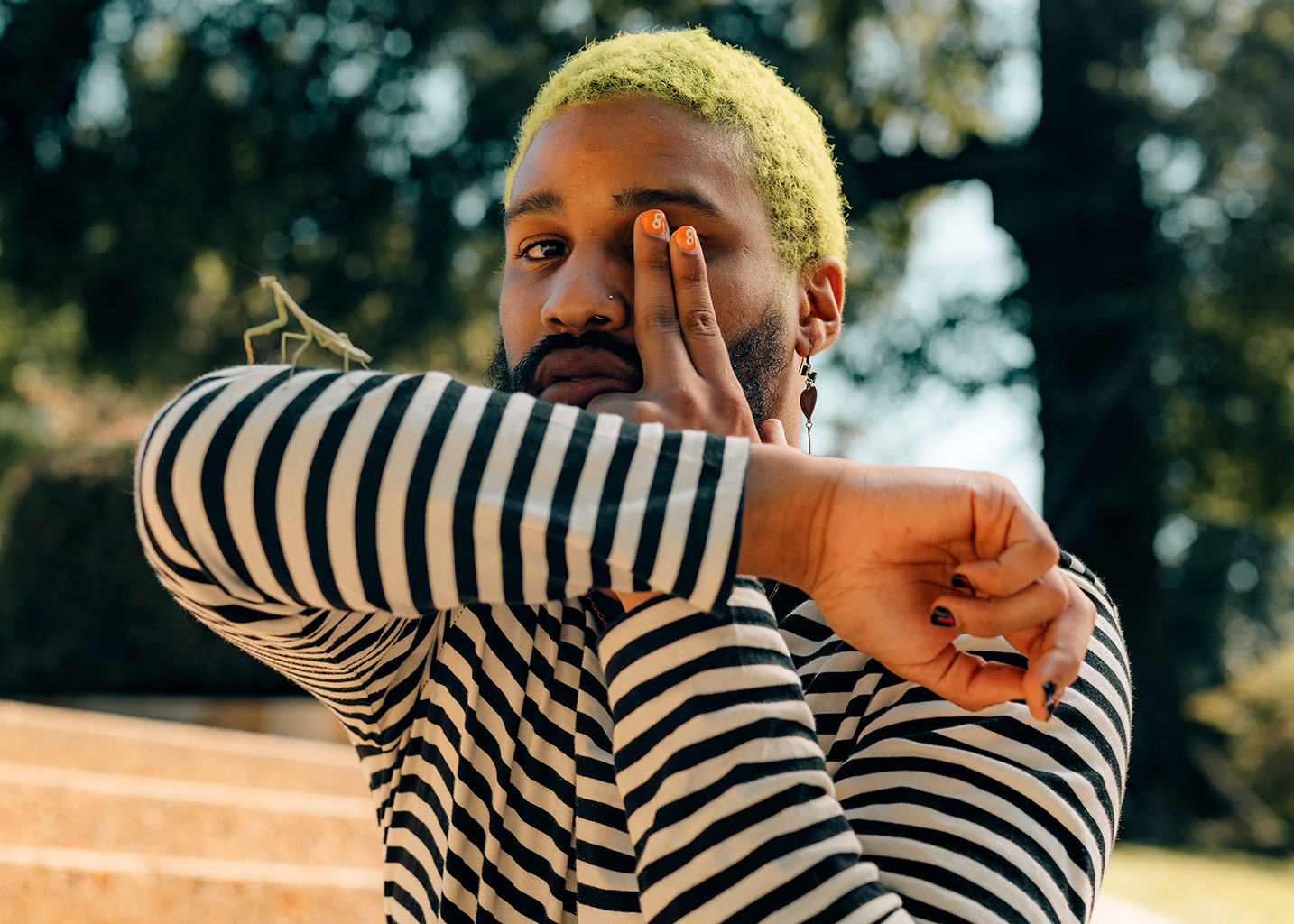I don’t know what it is about these ballrooms, but they always seem primed to go off. Maybe it’s because they were designed for getting down, with wide open wooden dancefloors and killer sound systems. Imagine the surprise of the 1914 founders, if they could peer through time and hear the hardcore racket that would be pummeling out on a Wednesday night, nearly 100 years later.
This was basically a double-headliner bill between two influential bands of different eras: Helmet, from the early ’90s, and the most famous of the ’70s school of artpunk, Wire.
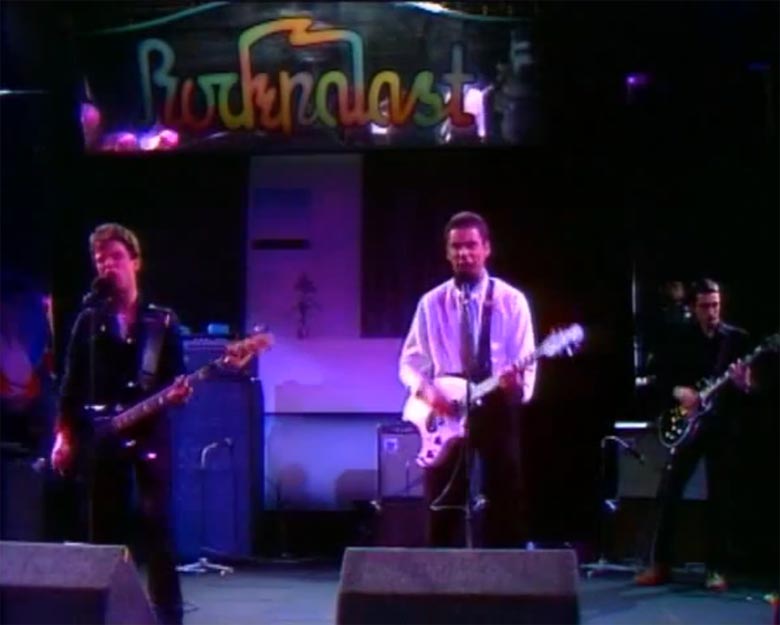
Helmet
In all my years of musical obsession, I have never really heard Helmet, I’m sorry to say, although I’m aware of their influence. Page Hamilton, guitarist, frontman, and the only consistent member, used to play in the influential noise rock outfit Band Of Susans, and Helmet’s original drummer, John Stanier, went on to pound skins for Tomahawk and Battles. Sometimes it’s good to go into a show with no pre-conceptions about a band or their work. It’s a great way to be introduced to them for the first time.
Helmet have been described as “thinking man’s metal” – an important link between the beastly slack of grunge and the stentorian brutality of post-hardcore, like Dillinger Escape Plan or Botch. Their style, full of simple, repetitive, lowslung guitar riffs, frequently in weird time signatures, would later be co-opted into the nu-metal brocore of Limp Bizkit and Korn, and subsequently discredited. After a decade of riff-worship, with the rise of Sunn O))) and Sleep, and the return of the mighty Swans, Helmet’s music is ready for a reappraisal.
A lot of the punters this Wednesday evening didn’t seem to know what hit ’em. This youthful exuberant soundtrack for a mosh pit. The crowd was a mixture of cross-armed stoicism and pyrotechnics, as the faithful found the frenzy, at the front of the stage. Helmet’s music is basically dance music for slamming, leaden grooves that are still remarkably fluid and rolling. It’s meant for basements and garages, where they can go for hours and hours.
Helmet’s music cannot be dismissively labeled as any one thing, however, and that’s why they’re interesting. Hardcore facesmashers give way to airy blasts of power pop, shoegaze and psychedelia. There is a hint of the eternal So-Cal adolescent in Page Hamilton: sundazed romantic futurism, snarky but still heartfelt. It can be a little awkward to see someone in their ’40s as an eternal teenager, but punk is permanently a music of rebellion, of self-expression and confidence.
With the recent fondness for Deafheaven’s blend of emo angst, fury and psychedelia, people may be ready to rediscover Helmet, or find them for the first time.
Wire
To best understand what the second headliners, Wire, are all about, it may be simplest to explore the two main beats of drummer Robert Grey, formerly known as Robert Gotobed. The first is a machinistic pulse, syncopated high hats over a steady throbbing 4/4 kick drum. This is like a busy disco variation of the classic motorik Krautrock groove, and it places Wire firmly as futurists. The second is a classic Ringo Starr backbeat, holding together the band’s jittery pop experimentalism.
Wire is one of the most influential post-punk bands of all time, which is ironic, as they made their first three classic records, Pink Flag, 154 and Chairs Missing at pretty much the same time punk was happening. They came from an art school background, and took an artistic, conceptual approach to punk’s DIY/anything goes mentality. Wire are the musical equivalent of Andy Warhol’s factory art, flat and slick and mass-produced. They are more like a Kandinsky sculpture than a band.
Hearing the originals raises the question: what is post-punk? The answer from anybody who was alive and operational at that time is “Nothing. It didn’t exist.” Again, to properly understand Wire, you must remember that this was the same movement that included both Elvis Costello as well as The Cure and Throbbing Gristle. They were heavily involved with electronics, and leaning towards the future. On this particular occasion, it was like seeing one of the great krautrock bands, like Can or Neu!, being fronted by Bryan Ferry. There is a fey, crooning quality to Colin Newman’s surreal, nearly nonsensical lyrics.
Wire do not repeat themselves (even in the same song). They are always rushing into the future, so you have to wonder when they undertake to make a new record or go on tour. Why here? Why now? On their new record, Change Becomes Us, Wire do revisit the past, taking some germs of ideas from 1980’s live recording Document & Eyewitness, and sculpting them into a modern organism.
It is easy to imagine Wire being dismissed during their recent tour run. First of all, everyone wanted to hear them play their “hits”, and they were moving on. They were a bunch of edgy, experimental provocateurs; that have never played the industry’s game. Now, with an air of “legitimacy”, mainly thanks to the influence they have had, they have the benefit of having solid gear and playing in legit venues with great sound. They have managed to stay both true to themselves and yet up-to-date, holding on to their minimalist, structuralist underpinnings, while beefing it up with amazingly beefy guitars and heavy-hitting drums.
Wire play a different kind of psychedelia – one not indebted to African music or rhythm ‘n blues. Their music is almost entirely European, focusing more on extreme repetition and layering, in the vein of Terry Riley or Philip Glass. It’s still got soul, but a different kind, produces different kinds of visions. It’s like the white-hot ephedrine rush of The Velvet Underground, mixed with the awkward bedsit soul of the nervous white youth.
Once again, the disenfranchised did not know what they were seeing, probably only familiar with Wire’s first trilogy, or merely curious. Some left early, and it was their loss, because Robert Grey possesses a third beat, described as a “high-speed two-step”, as heard on “Adore Your Island”, and it reminds us why Wire were such a huge influence of hardcore punk bands like Black Flag and Minor Threat. Colin Newman’s trademark bark can still whip a room into a jackboot maelstrom. For a moment, for an evening, we were swooningly in love with punk rock and all its potential.
They played mostly material from their new album, once again refuting that this was a nostalgia trip, but interspersed with some classics like “Map Ref 41°N 93°W” (which was once covered by My Bloody Valentine) and “Comet” from 2000’s Send. They have sadly lost one of their founding members, guitarist Bruce Gilbert, who will be missed – but “new guy” Matt Simms more than held his own. His style was a mixture of Television’s or Slint’s mathematical precision, with the acid-fried exploration of Can’s Michael Karoli – tons of soul and a great tone! They closed out with a full-blown oscillator noise jam, and then were joined by both of Helmet’s guitarists, for a barnstorming closer.
It was a real treat to see so many influential and experienced musicians in one place, at one time. Every practicing, forward-thinking musician could learn a thing or two from both of these bands. Here’s to another 36 years of Wire.
Ω

